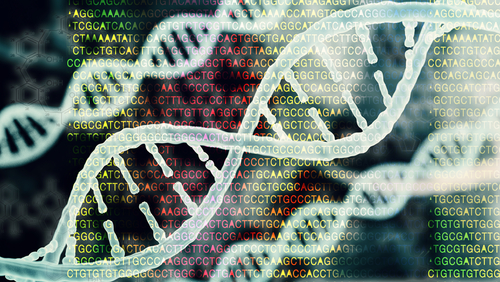Age-related Changes in TTR Gene Expression May Explain Disease Differences Within Families, Study Suggests

Variability in the onset and penetrance of TTR-related amyloidosis (ATTR) among members of the same family may be linked to the expression of different copies of the TTR gene throughout the aging process, a study suggests.
The study, “Monoallelic expression of the TTR gene as a contributor to the age at onset and penetrance of TTR-related amyloidosis,” was published in the journal Gene.
Familial ATTR, also known as familial amyloid polyneuropathy (FAP), is a genetic disease caused by mutations in the TTR gene, which provides instructions for making the transthyretin protein.
Transthyretin is produced in the liver and is responsible for thyroid hormones and vitamin A transport in the blood. When the TTR gene sequence is mutated, this produces a non-functional protein that breaks into pieces and creates protein deposits known as amyloid fibrils. TTR mutations are passed from parents to children through their DNA.
Disease symptoms vary depending on the TTR mutation. However, how different mutations affect the disease manifestations is not fully understood.
The most common worldwide mutation in the TTR gene is called p.Val30Met, but in Bulgaria and other countries, the p.Glu89Gln mutation is the most predominant.
For each gene, our cells have two copies, or alleles. In ATTR, generally one gene copy is mutated, and one is unaltered.
In this study, researchers wanted to gain more understanding on how the mutated p.Glu89Gln TTR gene and the functional TTR, or wild-type gene, are expressed in patients from the same family.
They analyzed genetic material from two blood and urine samples acquired over one year from six Bulgarian families who carried the p.Glu89Gln mutation in the TTR gene. In total, they examined 13 family members with great variations in the age of disease onset (ranging from 4 to 20 years) and penetrance, defined as the number of members carrying the disease-causing allele.
Researchers found that 87% of the blood samples showed expression of just one TTR allele, and 13% showed expression of both mutant and wild-type allele. Generally, mammalian cells express both gene alleles at similar rates. In this case, expression of just one TTR allele in ATTR could explain the differences in disease penetrance.
Analysis of the urine samples showed a 58% expression of just one TTR allele and a 42% expression of both mutant and wild-type allele.
Moreover, the researchers suggest that there is a predominant expression of a wild-type allele at younger ages and increased mutant allele expression during aging.
“The disease onset which is about 50s might be associated with biallelic [both alleles] expression,” the authors wrote.
“We propose a model of natural selection, which includes age-related allele exclusion leading to targeted monoallelic [only one allele] expression of the wild type TTR allele at younger age which is continuously shifting to expression of the mutant allele with aging,” they wrote.
These “intrafamilial differences in disease onset and penetrance need to be considered in genetic counselling and in follow-up of mutation carriers,” they concluded.






